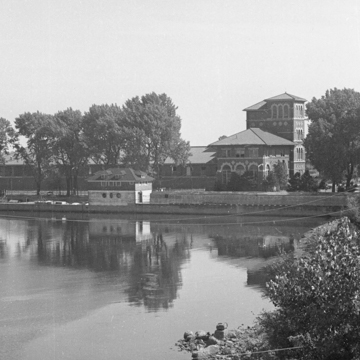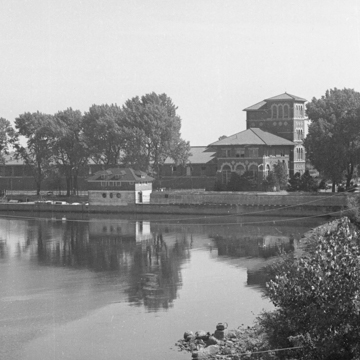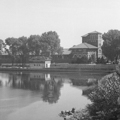Both Erie and Pittsburgh built elaborate water treatment complexes in the early years of the twentieth century after research showed that typhoid was spread through unclean water. Erie's three buildings at the foot of Chestnut Street along the shoreline of Presque Isle Bay contain a pump house, filtration station, and administration building that supply Erie with clean water from the lake.
This group of red brick buildings dates from 1912 to 1913, when the first pumping station of 1868 was remodeled and the city's first filtration plant built. The buildings' arched windows, stone surrounds, and deeply overhanging eaves are characteristic of Italian Renaissance architecture, as is the four-story corner tower on the parkway facade. In the 1990s, the administration building was renovated by Weber Murphy Fox to take advantage of its spectacular bay-front views, and the Erie firm of Crowner/King Architects refurbished the offices inside the filtration plant on the north side of the highway. The hipped-roof pump house (1912) on the south side of Bayfront Highway has a red tile roof and enormous two-story arched windows; it was renovated in 2001 by Roth Marz Partnership. Today, the public is invited by appointment only to see the four-story-tall Big Bertha steam-driven pump, which is a Pennsylvania Mechanical Engineering Landmark. What began as a utilitarian statement of human triumph over nature has evolved into a twenty-first-century attraction.





